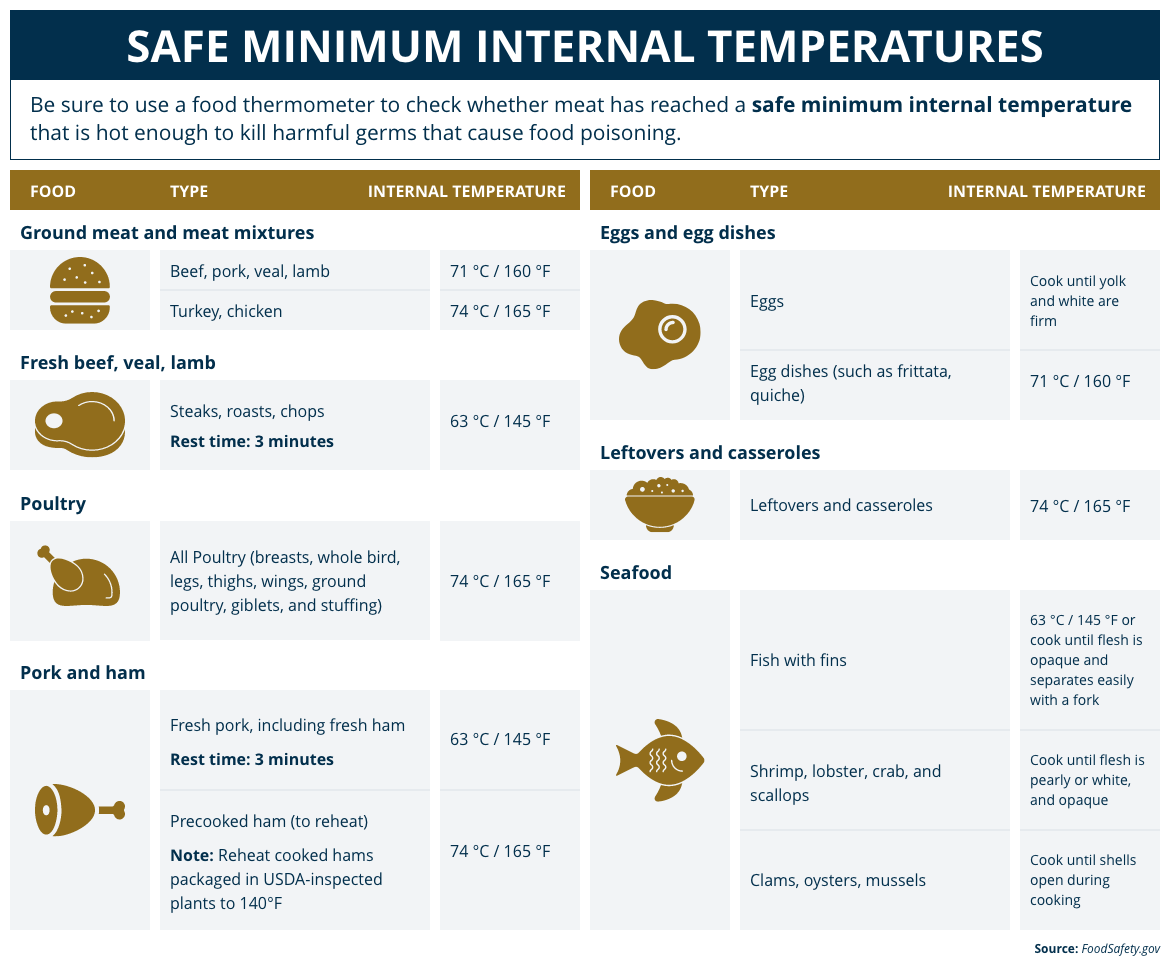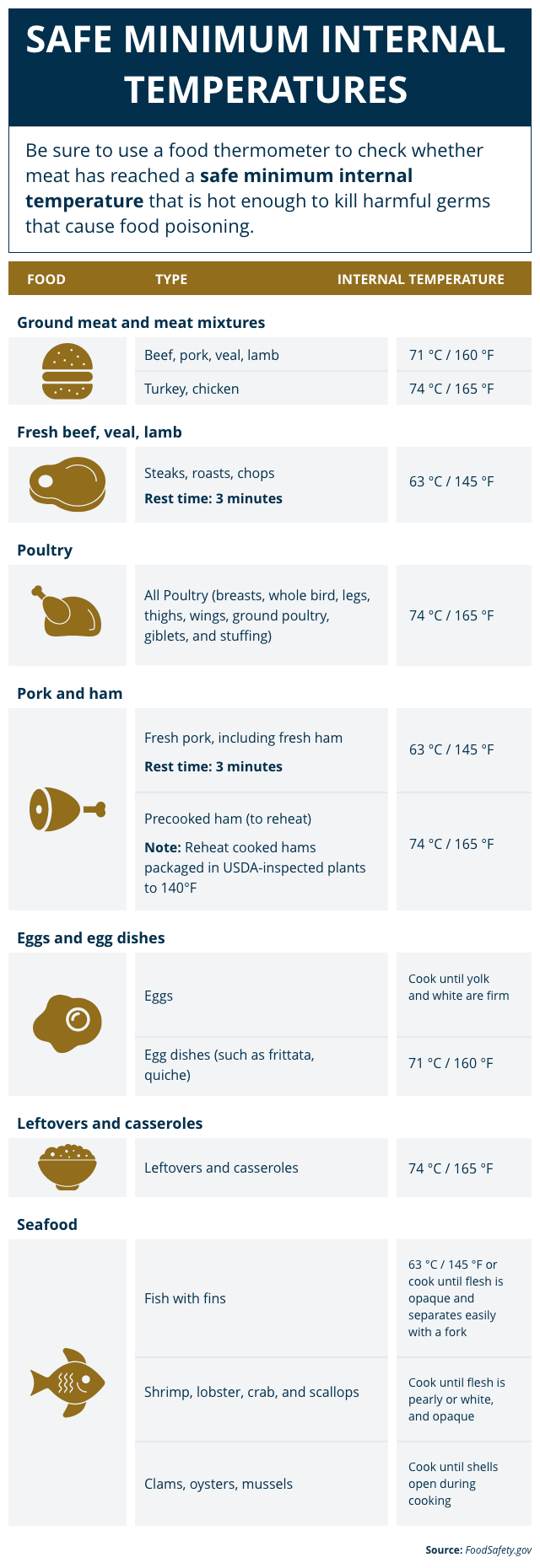13 Jun 2022
One of the Best Ways to Protect Your Health? Food Safety
Estimated read time: 5 minutes
Food is a form of love and care — it represents nutrition, life, joy, and passion. Most of us don’t immediately associate food with disease. But one in every 10 people are affected by foodborne illnesses each year, and according to the World Health Organization (WHO), there are over 200 such diseases, some of them minor and others deadly.
The WHO estimates that 77 million people in the Americas suffer from illnesses caused by contaminated foods each year, and more than 9,000 develop complications that result in death. Out of all cases, 31 million affect children under 5 years of age, more than 2,000 of which are fatal.
Most involve infections brought on by bacterias, viruses, and parasites. In addition to these naturally occurring germs, toxins and chemicals used in food processing can also cause sickness; conversely, inadequate standards and practices for food handling and storage may be a source of disease.

While SARS-CoV-2 is not transmitted through food, the COVID-19 pandemic brought renewed attention to issues related to hygiene, antimicrobial resistance, zoonotic diseases, and climate change. It has also allowed experts to identify vulnerabilities in food production and oversight.
In some Latin American and Caribbean countries, the tradition of street food complicates safety standards and poses serious issues to consumers’ health. Street food handling and preparation fall largely outside of government regulation and therefore pose a greater risk.
While anyone can get food poisoning and develop a foodborne illness, some groups are more seriously impacted than others, among them older adults, children under the age of five, people with weakened immune systems, and pregnant women.
The Culprits of Foodborne Disease
The Centers for Disease Control and Prevention (CDC) have identified over 250 foodborne diseases caused primarily by these six germs:
Noroviruses: A group of related viruses that are highly contagious and cause an illness commonly known as gastroenteritis or “food poisoning.” It spreads quickly and easily from person to person, typically in daycares, schools, and summer camps. While not typically severe, it can cause complications for small children and older adults.
Salmonella: Scientists have identified more than 2,500 forms of this bacteria, which causes an illness called salmonellosis. Most people get better without medication, but some more vulnerable groups may need antibiotics. The risk of contracting a salmonella infection is higher in countries with limited access to clean water and proper water hygiene sanitation and hygiene standards.
Clostridium perfringens: This bacteria spreads primarily in meats and poultry. Outbreaks have been linked to the holiday season, when people consume more foods such as turkey, roast beef, and barbecues.
Campylobacter: This bacteria is among the most antibiotic-resistant, and difficult or serious cases can be tricky to treat. People can get infected by eating raw or undercooked poultry or drinking contaminated water.
Staphylococcus aureus (staph): This bacteria spreads primarily through foods that are not cooked properly, including some meats, puddings, pastries, and burgers. But it can also spread through personal items such as towels and live on the skin or in the nose. In most cases, Staph is not harmful, except when it becomes resistant to methicillin, a condition known as MRSA.
E. coli (Escherichia coli): E. coli is a large and diverse group of bacteria found in the intestines of humans and animals and in the environment. It can also sometimes be found in foods and non-potable water. Some types of E. coli can cause diarrhea, while others lead to urinary tract infections, respiratory illnesses, pneumonia, and other diseases.
In addition to these, several other germs circulate widely across Latin America and the Caribbean, including Clostridium botulinum (botulism), listeria, and vibrio, the bacteria that causes cholera.
Depending on the germ, symptoms of infection can appear within minutes or days. It’s important to consult with a doctor or healthcare provider, especially if you have bloody stools, vomiting, intense diarrhea, or signs of dehydration.
Typical symptoms of a foodborne disease generally include:
- Vomiting
- Diarrhea
- Cramps
- Nausea
- Stomachache
- Fever and chills
How to Ensure Food Safety
As in many other areas of public health, food safety requires a commitment at the individual, local, national, and global level in order to prevent foodborne diseases.
This may seem daunting, but each household can take small yet important steps to ensure adequate food handling. There are four basic rules to follow:
Clean. Wash your hands before cooking and keep kitchen surfaces clean, since food-contaminating germs can propagate in the kitchen.
Separate. One common way in which germs are spread is through cross-contamination; for example, using the same cutting boards for both raw meat and vegetables. Ingredients should be handled separately, from the grocery store to the kitchen. Do not use the same cutting boards or utensils unless they have been properly washed.
Cook. It’s true that heat eliminates most germs, but only at the right temperatures. Foods are cooked safely when the internal temperature is high enough to kill germs that can cause disease (see graphic).
Cool. Foods must be safely frozen and defrosted safely. Defrosting should take place in the fridge or in a microwave, never outside, which allows bacteria to multiply quickly once the food reaches room temperature.
In Latin America and the Caribbean, the Pan American Health Organization (PAHO) works closely with countries in the region to strengthen food control systems through five pillars: standards and regulations; education and communication at the community level; surveillance at the public health level; and inspections and laboratories to supervise food establishments and identify germs. The early detection of issues in the food production, distribution, and consumption chain is key to preventing outbreaks.
Food safety is essential to human health and well-being. According to the Food and Agriculture Organization (FAO), only when foods are safe can we benefit fully from their nutritional value and the mental and social benefits of sharing meals.
In 2020, the United Nations designated June 7 as World Food Safety Day — a reminder that the issue of food safety affects all of us, that the foods we need to survive can also make us sick, and that the actions we take at both the individual and collective level are critical to good nutrition, health, and saving lives.
Remember, always consult with your physician or health care professional to determine the best options for your body and health and to answer any questions you may have regarding any medical matter.




